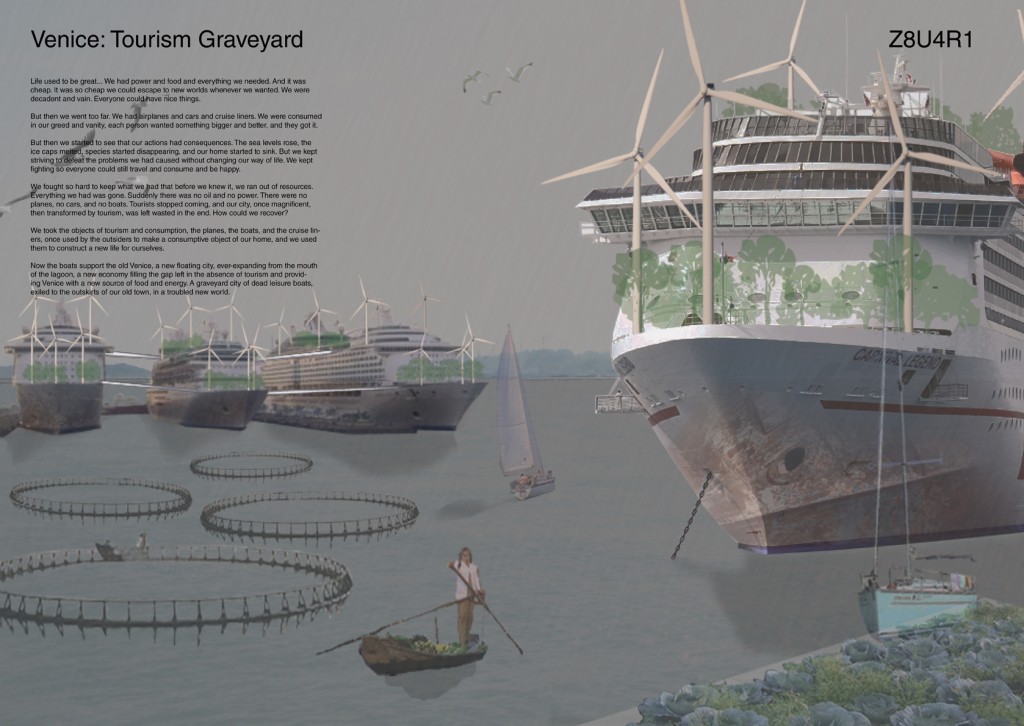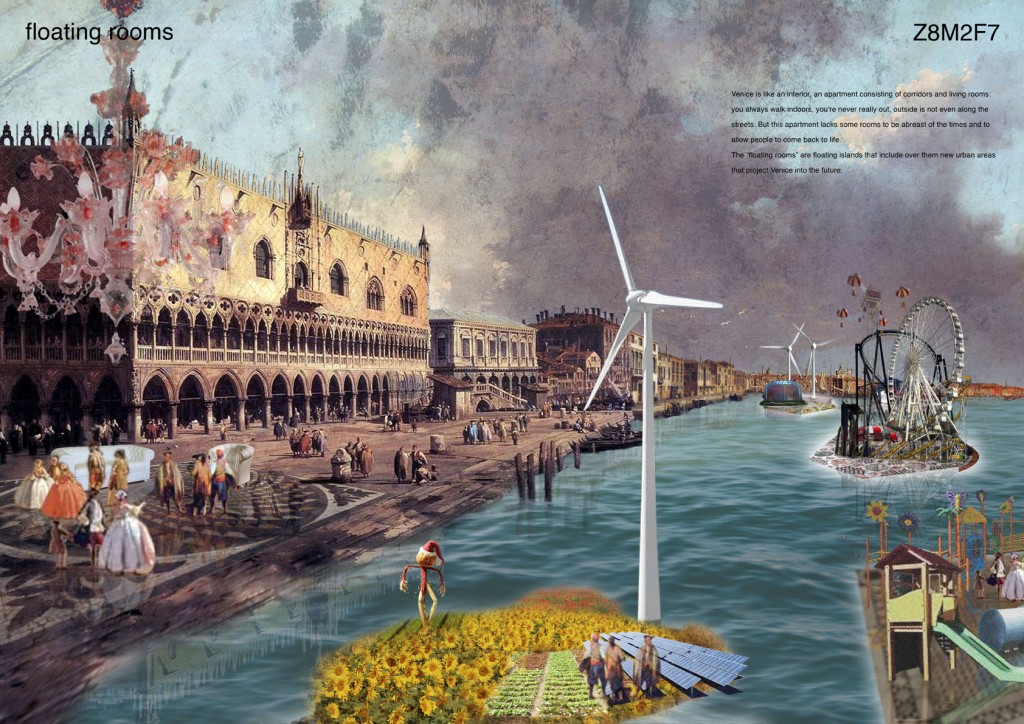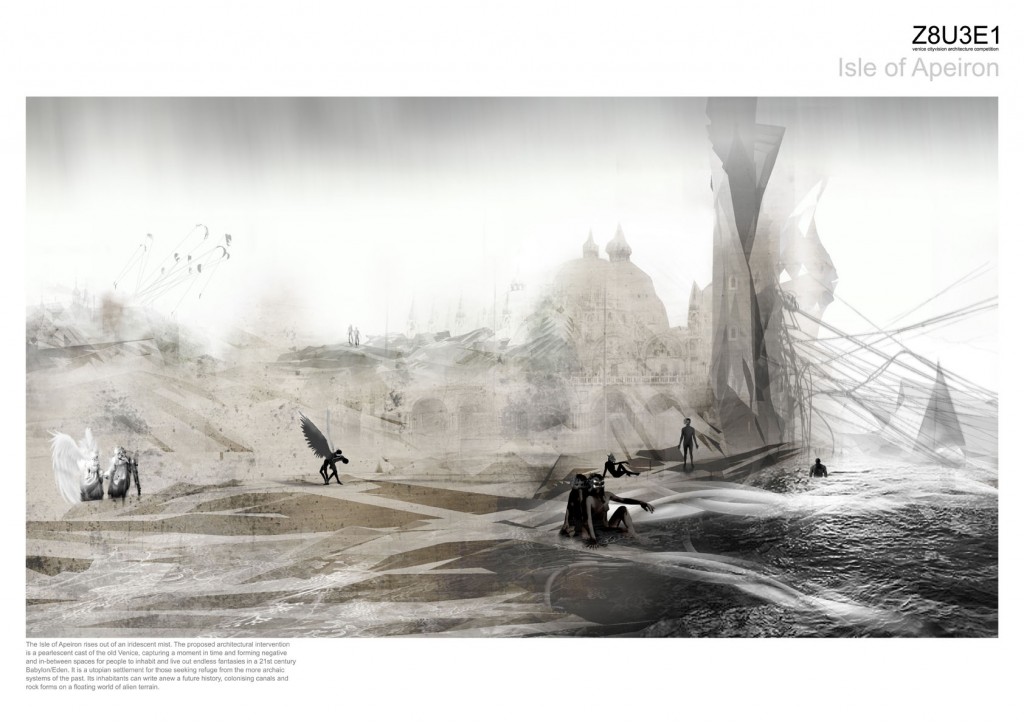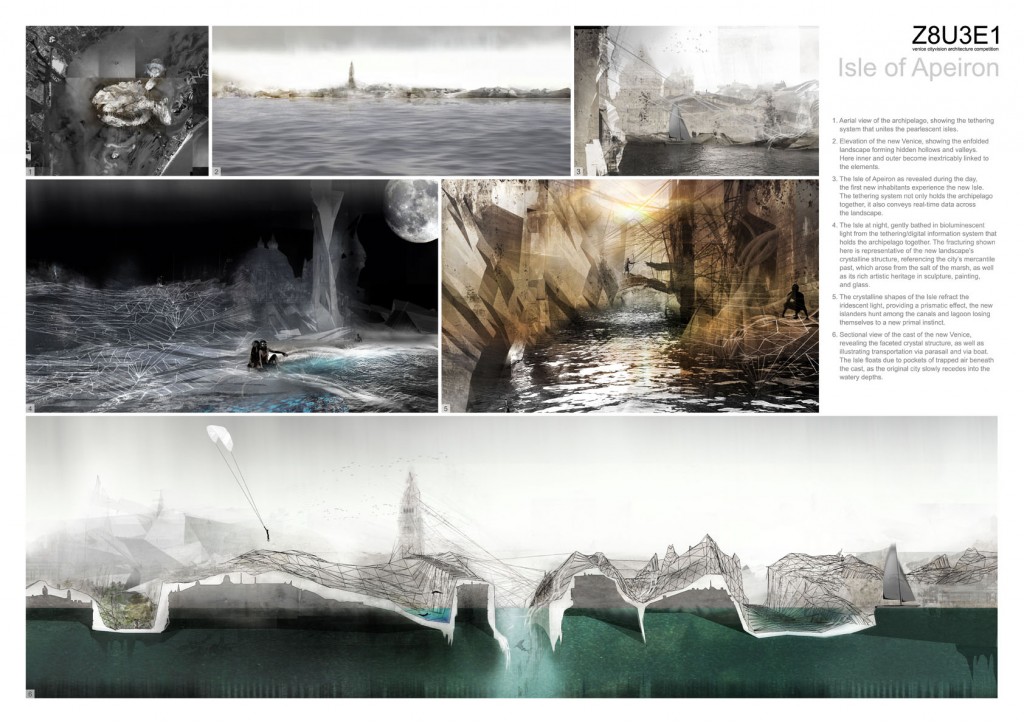Info:
Title: Isle of Apeiron - Code: Z8U3E1Contest: Venice / 2011
By: J. Norton / A. Walker / M. Griggs
Views: 2527 Likes: 0
Votes:
BJARKE INGELS10 NERI OXMAN8 ELENA MANFERDINI6 MARIA LUDOVICA TRAMONTIN6 BOSTJAN VUGA46.8
Isle of Apeiron
Unde Origo Inde Salus “From origin springs salvation.” Inscription from Madonna della Salute (referencing the Feast of Mary and the date of the founding of Venice, 25 March 421) “All comes from dust, and to dust all return.” – Ecclesiastes 3:20 Conceptual underpinnings Like the lagoon that surrounds it, Venice embodies all that is changing and variable. The city undulates with the tides, its foundations inscribed in the water. Everything is seen in relation to the sea, from the mundane (such as the logistics of traffic) to the ethereal (such as evanescent quality of the light). Ever-shifting between water and land, Venice is the source of endless fantasies about birth and re-birth. Our architectural intervention for Venice has at its foundations Pythagorean philosophies concerning the transmigration of souls (re-birth) and apeiron (regeneration of the world through the action of opposites).
As Venice comes from the water, so it can be said that humans are the embodiment of dust. As a result, our new architecture combines these opposites to generate a unique form that gives rise to a new urbanism and the salvation of a city.
The proposal and approach We coat the building surfaces and streets of Venice with a concrete dust containing a high proportion of silica and high reactivity Metakolin, the dust serving as a metaphor for the human souls occupying the city. It forms a hard, enduring, pearlescent white shell in reaction with water (a reference to the foundations of the city itself). This cast captures a moment frozen in time, and gives rise to a new urban form as the old Venice recedes into the watery depths. The islands of the new Venice are buoyed by trapped air/air pockets. While transport is primarily by foot or by boat, parasail transport carries people between the islands, in a reference to the empyreal. Freed from the causeway, the islands can be moved to compensate for rising tides. The archipelago is held together using a biomechanical tethering system embedded with sensors and nanotubes to reveal everything from barometric pressure to the health of the islands, to the flow of pedestrian and gondola/boat traffic. The tethers’ bioluminescence provides low-level light as they trail across urban landscape, drawing power from photovoltaics, as well as the ebb and flow of the tides. Growing on city surfaces is a responsive super-contacted digital lichen that can respond to people’s activities and movements, reconfiguring its internal power, as needed. Floating allotments replete with desalination membranes for water purification make the archipelago self-sustaining.
This new Venice is an epitaph for the souls who created this magnificent city. Its distinctive crystalline form pays tribute to the city’s mercantile past — which rose to greatness from the salt of the marshes — as well as to its rich artistic heritage as expressed in the forms of painting, sculpture and glass. Exposed to the elements, the terrain enfolds, creating crests and waves of fresh juxtapositions and new interrelationships, in which inner and outer become inextricable. People inhabit the secret places in the landscape, its hidden hollows, carving out of the shards a new life in a 21st century Babylon/Eden. The Isle of Apeiron is a utopian settlement for those seeking refuge from the more archaic systems of the past. Its inhabitants can write anew a future history, colonising canals and rock forms on a floating world of alien terrain.
As it was when originally created in 421, this new archipelago will be self-sustaining; in this case it will contain its own complete ecosystem, forming a self-sufficient final frontier against global warming, with its topology firmly anchored in a deep and enduring artistic tradition.
Related Posts :
Comments:
Info:
Title: Isle of Apeiron
Time: 6 giugno 2011
Category: Venice
Views: 2527 Likes: 0
Tags: A. Walker , J. Norton , M. Griggs








